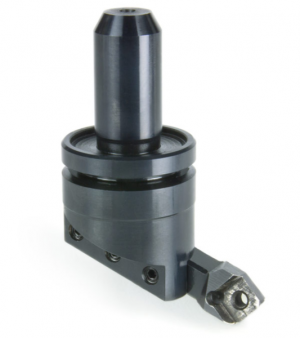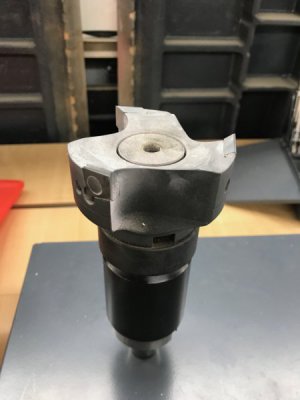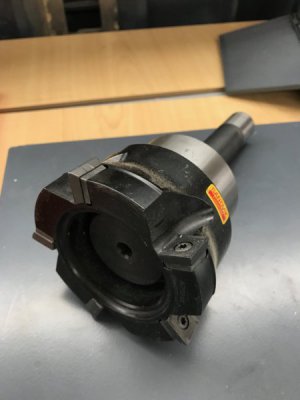For those that may have been disappointed in the past with the finish, have you discovered any magic to make it more acceptable?
Alan, the Superfly is actually a good flycutter. I've used it enough now that I think I've sorted it out, sort of.
The issue with the finish, in my opinion, is that the insert contacts the material with a broad contact point. The nose radius is flat and quite broad. This large contact area produces a large radial cutting force that pushes the cutter away from the surface. As a result, the tool flexes/vibrates and produces a less than ideal surface. Don't get me wrong; it is flat and it does reflect but if you look carefully you will see tiny ridges in the work that may not be palpable but are visible.
As we know, one way to reduce cutting forces in general is to increase cutting speed and this actually does help reduce the ridge effect significantly but it doesn't eliminate it. If radial forces are the culprit then taking bigger depths of cut should help and it does; going at least 0.0100" deep allows the tool to cut much better and you get less vibration. Going deeper takes off more stock but it doesn't change the finish, at least in my shop.
The other force that is present but not controllable without some kind of balance beam are centripetal forces, just like with a boring head. This complicates things because while increasing cutting speed reduces cutting forces, it also increases centripetal force. Since we know that increasing the radius of the cutter actually reduces centripetal force, I tried using the cutter at max extension and this does seem to help the surface finish.
So, max extension, higher cutting speed (optimal for me is about 2400 rpm in aluminum) and at least a 0.0100" depth of cut seems to produce a decent finish. I also found A-9 cutting fluid to work better than WD-40 with aluminum but that is already an almost universal experience. The resulting finish is quite acceptable and dead flat. It is possible to beat the finish with a single-insert face mill (much more rigid and you can choose a larger nose radius). I haven't used a HSS tool in a fly cutter in a long time but as I recall, this will also give a better finish but you will not be hogging material like the Superfly can. That thing is a beast and will throw chips across the shop!
Overall, I think it is a good tool but it is not a finishing tool. It will make stuff flat and produce a smooth surface but machining marks will show. Are these marks objectionable? Dunno' - how long is a piece of string? That NYCNC guy seems to love his Superfly and my tool leaves fewer marks than his does so eye of the beholder, right?
You also might want to look at the B-52 flycutter and the Suburban Tools flycutter. Both designs minimize centripetal forces ... at a cost.





